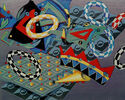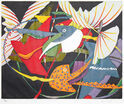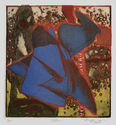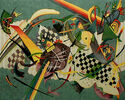
19th, 20th & 21st Century Fine Prints
707-546-7352 · fax 707-546-7924 · web: www.annexgalleries.com · email: artannex@aol.com
James P. Monson Biography
James P. Monson
American
1943
Biography
James P. Monson was born in Minneapolis, Minnesota, in 1943. Known for his large, complex AbEx color woodcuts and lithographs, Monson began studying art with a focus on printmaking in 1965 at the University of Iowa, under renowned printmaker Mauricio Lasansky. There, Monson received his MFA in printmaking in 1969. Upon graduation he moved to Paris to work with Stanley William Hayter at Atelier 17. From 1970 to 1973 he was Hayter’s assistant and printer. He established his own studio and taught summer workshops in Tourrette-Levens and he was a Guest Lecturer at the Tyler School of Art in Rome.
In the Fall of 1973, Jim Monson accepted a position replacing Warrington Colescott at the University of Wisconsin in Madison. Among his memorable students were Bret Wilson, Susan Gosin and Joann Moser, who wrote her doctoral thesis on the global influence of Hayter and Atelier 17. A few years later she was to become the head curator for prints at the Museum of American Art in Washington D.C.
In 1976 Monson was appointed Assistant Professor of Printmaking at Carleton College and St. Olaf College, and he participated in the Print Symposium with Garo Antreasian at the University of MA in Amherst in 1981. Monson was the Assistant Professor of Printmaking and Drawing at the College of the Holy Cross in Worcester, MA from 1977 to 1982. In 1984 his wife Isolde Baumgart accepted a teaching position at the Merz Academy in Stuttgart. The couple spent much of their time between Frankfurt, Stuttgart and the South of France. 1985 he returned to Europe to live and work in southern France.
Although etchings and engravings dominated his early work, Monson became known for his color woodcuts, which were his passion for more than thirty years.
Collections: Bibliotheque Nationale, FR; british Museum, U.K.; Universities of Chicago, Iowa, Wisconsin, and others; Witchita Art Museum; Library of Congress, and many others.




